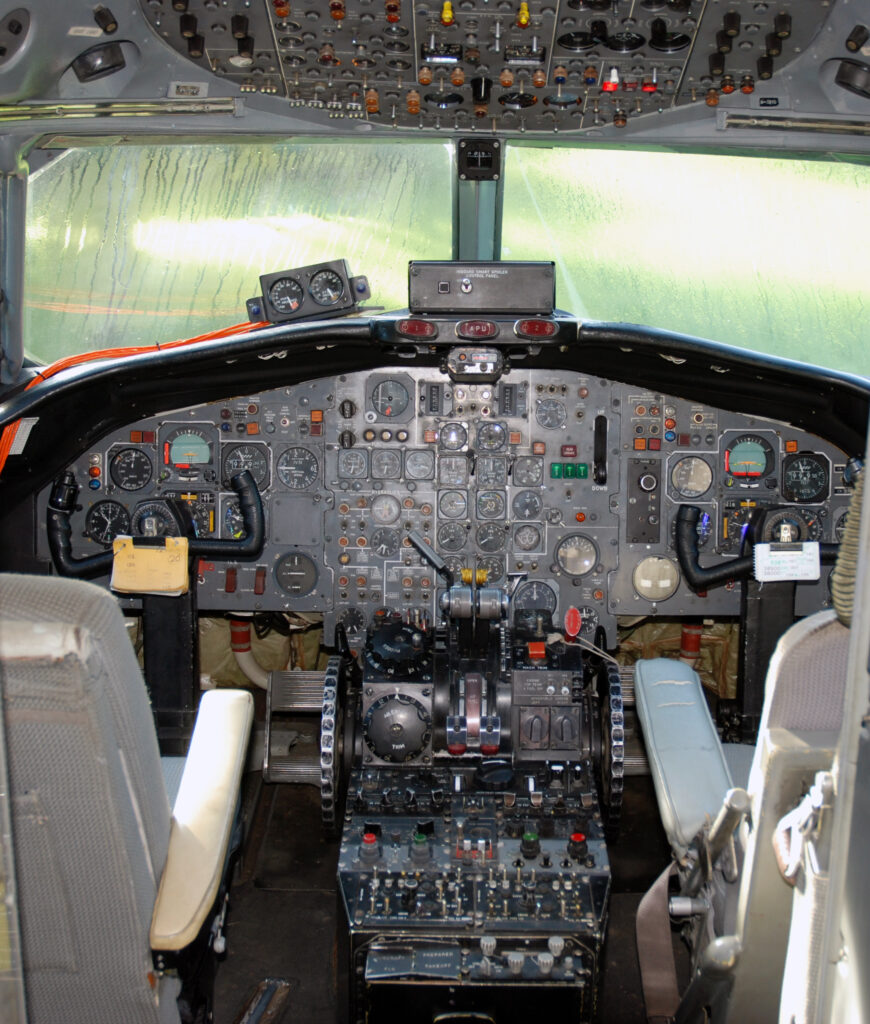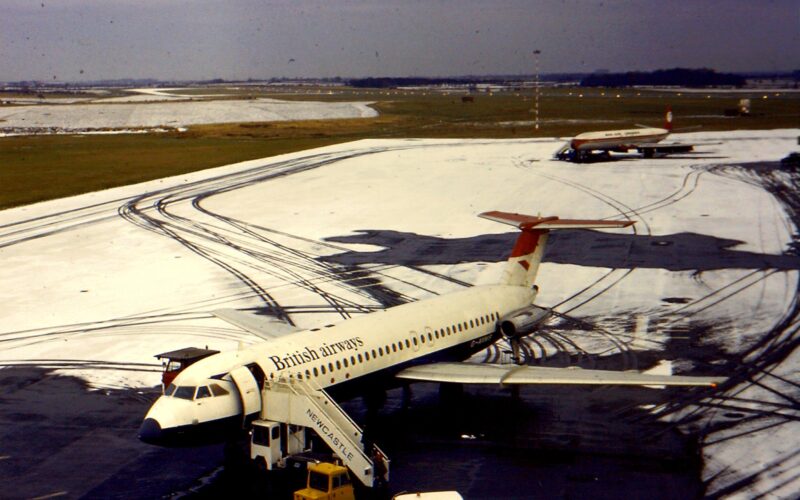On June 10, 1990, passengers boarding British Airways Flight 5390 from Birmingham to Málaga could never have imagined the terrifying ordeal that lay ahead. In what would become one of the most remarkable stories of survival in aviation history, the pilot was sucked out of the plane in mid-flight and held only by the window frame for a nerve-wracking 20 minutes.
Sudden and explosive decompressions on an airplane can pose a grave danger to the lives of those onboard. But against all odds, the captain survived to tell the tale.
In this article, we’ll explore the unbelievable story of British Airways Flight 5390, delving into the harrowing experience and the lesson that were learned.
Aircraft and crew of BA 5390
British Airways 5390 was a popular leisure flight route for British tourists heading to Málaga–Costa del Sol Airport (AGP) in Spain. Although the airline no longer operates out of Birmingham, it still serves the destination from various airports in Britain, highlighting its nationwide appeal.
On the warm summer day of June 10, 1990, the flight departed Birmingham with a capacity of 81 passengers and six crew members aboard the BAC 1-11-500 aircraft. The plane used in this flight was a stretched version of the BAC One-Eleven, with a maximum capacity of 119 passengers. The flight departed Birmingham at 08:20 local time.
The BAC 1-11 was a highly successful British jet airliner during the 1960s. In December 2012, the last operational BAC One-Eleven in the UK, which had continued to fly as a military aircraft, was retired. The last flyable One-Eleven was retired by Northrop Grumman on May 7, 2019, after serving as an F-35 testbed.
The aircraft involved in the incident, BAC 1-11-500, was certainly not new. Its first flight took place in 1971 and it had previously been flown for various German and British airlines before joining British Airways in 1988.

BA flight 5390 was piloted by 42-year-old Timothy Lancaster, an experienced captain with more than 11,000 flight hours, including 1,075 hours on the BAC One-Eleven type. His co-pilot was 39-year-old Alastair Atchison, who had logged more than 7,500 flight hours, with 1,100 of them on the BAC One-Eleven. Unfortunately, this flight would not be routine.
Sudden decompression
During takeoff, the flight was under the control of First Officer Alastair Atchison, who handed over control to Captain Tim Lancaster as the plane continued to climb. Just 13 minutes after take-off at 08:20 local time, the flight reached an altitude of 17,300 feet (5,300 m) over Didcot, Oxfordshire, and the cabin crew were preparing for meal service. Interestingly, both pilots had released their shoulder harnesses and Lancaster had loosened his lap belt before the incident occurred.
A loud bang was heard as the left windscreen on Lancaster’s side separated from the forward fuselage, causing a sudden decompression. This resulted in Lancaster being propelled head-first out of the aircraft by the rushing air from the decompression, with only his legs caught on the flight controls preventing him from being completely sucked out of the plane. His head and torso remained outside the plane, quickly exposed to extreme wind and cold. As a result, the autopilot disengaged, causing the plane to descend rapidly.
Flight attendant Nigel Ogden was entering the cockpit at the time of the explosion and quickly realized the severity of the situation. The cabin was then filled with condensation before the plane began its rapid descent.
Critical descent
The decompression caused the cockpit door to collapse inwards and jam the throttle controls. As the aircraft picked up speed due to its quick descent, plane documents and other small items were sucked out of the cockpit while some debris blew in from the passenger cabin. In response, Atchison decided to continue the descent to a safe altitude to regain acceptable air pressure and oxygen levels, as the plane did not have enough auxiliary oxygen supplies for all passengers and crew.
In the meantime, the cabin crew entered the cockpit to hold onto Lancaster’s body, fearing that it might be ingested into the engines or damage the plane’s wings if they let go. Ogden grabbed Lancaster’s belt while the other attendants secured loose objects and instructed passengers to prepare for an emergency landing.
Atchison re-engaged the autopilot and made a distress call, but communication was difficult due to wind noise. This led to a delay in establishing emergency procedures. Eventually, Ogden became exhausted from holding onto Lancaster, and flight attendants John Heward and Simon Rogers took over. The captain’s head repeatedly struck the fuselage and, at this point, the crew believed him to be dead. But Atchison instructed them to continue holding on to him to prevent potential damage to the plane.

Emergency landing at Southampton airport
Atchison eventually regained control of the aircraft and successfully received clearance from air traffic control to make an emergency landing at Southampton Airport (SOU).
During this time, the flight attendants were able to free Lancaster’s ankles from the flight controls while continuing to hold onto him.
At 08:55 local time, Flight 5390 landed successfully, despite concerns that the runway may have been too short for the fuel-heavy BAC 1-11-500.
Lancaster sustained several injuries, including frostbite, bruises, and fractures in his arms and hands, while Ogden also suffered from frostbite, an injured arm and a dislocated shoulder. Despite the severe injuries, both survived the ordeal. There were no other injuries reported.
The landing took place 35 minutes after take-off from Birmingham. In total, Lancaster was constrained outside the cockpit for more than 20 minutes, causing his colleagues to fear for both his and the passengers’ lives.
Final investigation
An investigation was promptly launched to determine the cause of the BA Flight 5390 incident. The bolts holding the windscreen in place, and the missing window, were found in Cholsey, Oxfordshire, around 5.5 miles (9 km) away from the location where decompression took place. Upon further inspection, investigators found that the bolts used to hold the windscreen panel in place were too narrow and short, a direct result of malpractice at British Airways’ maintenance facility in Birmingham. These bolts had been installed during maintenance 27 hours before the incident took place.
Investigators found that 84 of the bolts used were 0.026 inches (0.66 mm) too small in diameter, while the remaining six were the correct diameter but 0.1 inches (2.5 mm) too short. This seemingly small difference meant that the bolts were unable to withstand the air pressure difference between the cabin and the outside atmosphere, causing the decompression. The aircraft’s previous windscreen had also been fitted with incorrect bolts, although it was replaced by the shift maintenance manager on a like-for-like basis with no reference to maintenance logs.
The shift maintenance manager was found to be responsible for installing the incorrect bolts that failed to follow British Airways requirements. Investigators recommended that the Civil Aviation Authority push the need for aircraft engineering personnel to wear corrective glasses if prescribed. The investigators also criticized the processes themselves, which should have mandated testing or verification by another person for this crucial task. Lastly, they attributed the shift maintenance manager’s working practices to the lack of direct monitoring by Birmingham Airport management.
Aftermath
The crew of British Airways flight 5390 were recognized for their heroism following the incident. Atchison and flight attendants Susan Gibbins and Ogden were awarded the Queen’s Commendation for Valuable Service in the Air. Additionally, Atchison was awarded a Polaris Award in 1992 for his bravery.
After leaving BA, Atchison flew for Jet2 and retired on his 65th birthday in June 2015. Lancaster returned to flying just five months after the incident and also flew for easyJet before retiring in 2008.
The aircraft spent three more years with BA before being sold to Romanian airline Jaro International in 1993. It flew for them until the airline ceased operations in 2001 and was eventually scrapped in 2002.
A news report about this incident can be viewed here:
Sichuan Airlines Flight 8633
The incident involving British Airways flight 5390 is not the sole occurrence of an aircraft losing its windshield during a flight. On May 14, 2018, a Sichuan Airlines Airbus A319 operating as flight 3U8633 from Chongqing Jiangbei International Airport in China to Lhasa Gonggar Airport in Tibet experienced a similar incident. 40 minutes into the flight, the right front windshield separated, causing an uncontrolled decompression, and despite wearing a seatbelt, the first officer was partially sucked out of the aircraft.

